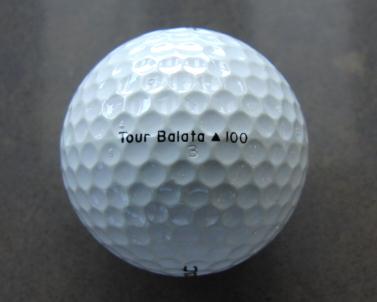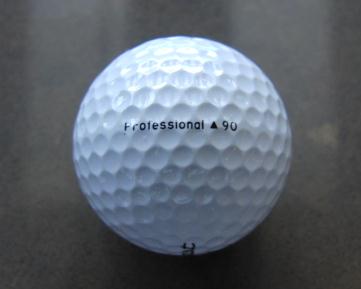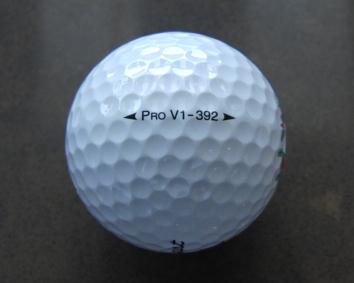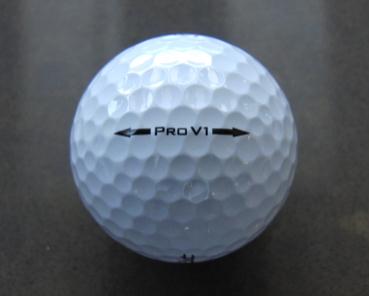Evolution of Titleist Tour Quality Golf Balls
Great Study and Stats! Provided by Andrew Rice Golf
Tour Balata 100
- Total Distance 261.6 yds
- Carry 224.7 yds
- Clubhead Speed 110.1 mph
- Ball Speed 160.7 mph
- Smash Factor 1.46
- Attack Angle -0.4 degrees
- Spin Loft 9.0 degrees
- Launch Angle 6.5 degrees
- Spin 2789 rpm
Professional 90
- Total Distance 262.1 yds
- Carry 251.9 yds
- Clubhead Speed 110.6 mph
- Ball Speed 161.4 mph
- Smash Factor 1.45
- Attack Angle -1.1 degrees
- Spin Loft 6.9 degrees
- Launch Angle 6.5 degrees
- Spin 2915 rpm
Pro V1 - 392
- Total Distance 286.4 yds
- Carry 251.9 yds
- Clubhead Speed 110.1 mph
- Ball Speed 164.7 mph
- Smash Factor 1.50
- Attack Angle -3.0 degrees
- Spin Loft 10.8 degrees
- Launch Angle 6.5 degrees
- Spin 2739 rpm
Pro V1 New
- Total Distance 298.4 yds
- Carry 271.1 yds
- Clubhead Speed 110.8 mph
- Ball Speed 167.2 mph
- Smash Factor 1.51
- Attack Angle -3.1 degrees
- Spin Loft 11.7 degrees
- Launch Angle 7. degrees
- Spin 2850 rpm
Things you should be aware of: The numbers listed above are an average of the six shots struck with each ball. Each ball was only hit once. The golf balls, while all pristine and "new" are very different age wise. The balata balls have been waiting in their sleeve for more than twenty years for someone to play with! The balls had all been stored in an air-conditioned space and were stored together. The weather was a crisp 74 degrees with a slight left to right breeze blowing - lovely for August! Zack used a Titleist D3 9.5 driver with a Diamana 'ahina X shaft by Titleist.
Points of Interest:
- Obviously the distance gaps were what interested me most and there were no real surprises there, other than the "upgrade" from the early Pro V1 to the newer model - almost a 5% increase!
- The huge leap in distance off the tee on the PGA Tour in 2000 is due to only one thing - the introduction of the Pro V1. An increase in distance of almost 10% over the scuff resistant Professional.
- I thought the spin rate on the wound balls (Balata and Professional) would be through the roof. Not so! The balls sounded very soft off the face and seemed to struggle to get into the air - almost as if they were unhappy to be put into play this late in the game! Zack said it felt like he was hitting ping pong balls.
- I was very interested in the fact that the smash factor was lower with the two softer balls. It almost seemed as if it was more difficult to get the smash factor up due to the softness/compression of the ball. BTW, smash factor (generally speaking) is the ball speed divided by the clubhead speed and it measures the efficiency/quality of the strike.
- The older/softer balls definitely curved more than the more modern models. This was noticeable even to the untrained eye.
- Since the study I have gone back and weighed each model of golf ball measured. I have long been under the impression that all golf balls weighed 46 grams. The Tour Balata (43gr) and the Professional (42gr) were much lighter than the others (46gr). Not sure if a ball can "lose weight" or were they made at that weight?
On a side note: I also had Zack hit six older model Pro V1X - 332 balls. I kept this data out of the study as I wanted to key in on four separate generations of Titleist balls and this model was a relative of the early model Pro V1 we studied. Interestingly enough this was the ball that traveled the furthest - a whopping 307.3 yds! (All the additional clubhead numbers were similar to the other models). I took from this that it is important to play a golf ball that fits your clubhead speed/game. With a driver speed in the vicinity of PGATour average (112 mph), Zack currently plays the new Pro V1X and this study confirmed that the X is the right ball for him.
If your driver clubhead speed is below 95 mph you should use the Titleist NXT or equivalent. With speeds between 95 mph and 105 mph you should be using the Pro V1 or equivalent ball, and above 10 5mph you should be using the Pro V1X or equivalent.
The moral of the story is that when it comes to golf balls, new technology fitted to the appropriate golfer makes a real difference. Take the time to chat with a teacher or professional you respect and get some sound advice as to which ball might make a difference for you. Oh, and that pristine logo-ed dozen you've been saving for that special course, remember the one your buddy bought back from Augusta for you in '78 - eh...not so good.




No comments:
Post a Comment